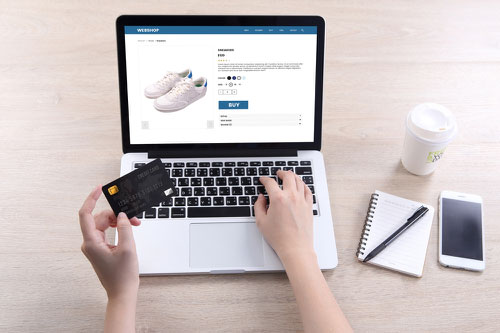In 2017, businesses across eight major industry segments are expected to lose more than $48.2 billion in ecommerce fraud, according to the Signifyd Global State of Ecommerce Fraud in Q1 2017 report. Ecommerce fraud increased 33 percent year-over-year, reports global information services group Experian. With EMV chip cards thwarting attacks in stores on point-of-sale terminals, thieves are heading online with stolen cards and information to complete costly purchases.
If your business sells products or services online, protecting your store from fraud not only saves your business money, but keeps your reputation intact and helps you maintain customer trust. Use these five expert tips to make your ecommerce store more secure for customers.
1. Protect Against Malware
From Ohad Greenshpan, Co-Founder and CTO of Namogoo
Malware is a type of malicious software that is created to damage computer systems, networks, or devices. Fraudsters can send the malware to a business user, who may accidentally download it and infect an entire network. Malware is affecting brands on both desktop devices and mobile sites, with a 2017 report by Namogoo showing up to 25 percent of web sessions are infected with malware. Often, malware attacks occur through pop-up advertisements for competitors, which leave users unsuspicious that the experience has been tampered with. Attacks like these hurt your bottom line, though, because they disrupt the customer experience.
“Those protecting the customer journey experience significantly higher conversion rates — winning back potentially stolen revenue,” says Greenshpan.
While consumers sometimes accidentally download malware by accessing unsecured Wi-Fi or using bad extensions, businesses can proactively combat malware by using malware detection software that blocks unauthorized ads. Antivirus and anti-spy software constantly monitors threats to stop them from affecting your business.
2. Use Address Verification Service and Card Verification Value
From John Rampton, Founder of Due
As consumers make purchases online, your business should use verification measures to make sure the consumer is indeed the real card holder and has their card in hand. Address Verification Service and Card Verification Value help businesses improve purchase accuracy, since consumers are required to input additional information besides just a potentially stolen name and card number.
Address Verification Service requires that an online purchaser puts in the address that is associated with that card. Card Verification Value is the three digits on a card that uniquely identify it. If neither of this information matches up when a customer is attempting to shop online, the purchase can be halted before it goes through.
3. Put Your Store on a Secure Platform
From Tony Messer, Co-Founder of Pickaweb.co.uk
You’ve probably noticed some sites work when you place https:// in front of them, and some don’t. HTTPS stands for Hypertext Transfer Protocol Secure, which protects users with a secure and private browsing experience through the implementation of certain security protocols. Considering search engines like Google rank websites that do not have secure websites lower in search, you could be losing out on wealth-generating search engine optimization potential by not securing your site.
Whatever platform you are hosting your ecommerce store on should also be secure. Check the software provider for regular security updates. You can also install an ecommerce security platform that adds an extra layer of protection.
4. Regularly Update Your Website
From Dmitry NIkolaenya, SIEM Department Coordinator for IBM QRadar
As fraudsters become more sophisticated, so do security updates. Software updates are constantly occurring because developers identify risks or work to fix things that are broken and could potentially open up your business to fraud. As they amend backend software that powers your website, as well as the features that users interact with on it, your ecommerce store should also update with the latest security measures in place.
It’s vital that your business avoids keeping unpatched applications and extensions around, since hackers who are looking for sites to target will consider you over an ecommerce site with more recent updates. Aim to update your system as soon as new updates appear in the marketplace.
5. Use Centralized Fraud Detection
From Angel Grant, Director of Global Product Marketing and Strategy for Cybersecurity Firm RSA
More fraud detection services don’t equal better protection for your business. A survey by RSA showed 57 percent of organizations use at least four and up to 10 tools to combat fraud for their businesses. Using different services for various aspects of your website increases the burden on your IT department, who will have to juggle managing all the services and work to not miss any important warning signs.
A centralized tool gives organizations better visibility across all platform sessions. Investigations into fraud can happen more quickly, because more information is readily available in one place. A return on investment on a single system is also easier to identify compared to considering multiple ones.
Get Streamlined Ecommerce Security From North American Bancard
It’s vital your business has strong ecommerce security practices in place before you sell online. Using ecommerce merchant services from North American Bancard provides your business with best-in-class ecommerce security that’s powered by the latest technological developments. Contact us for more information.



